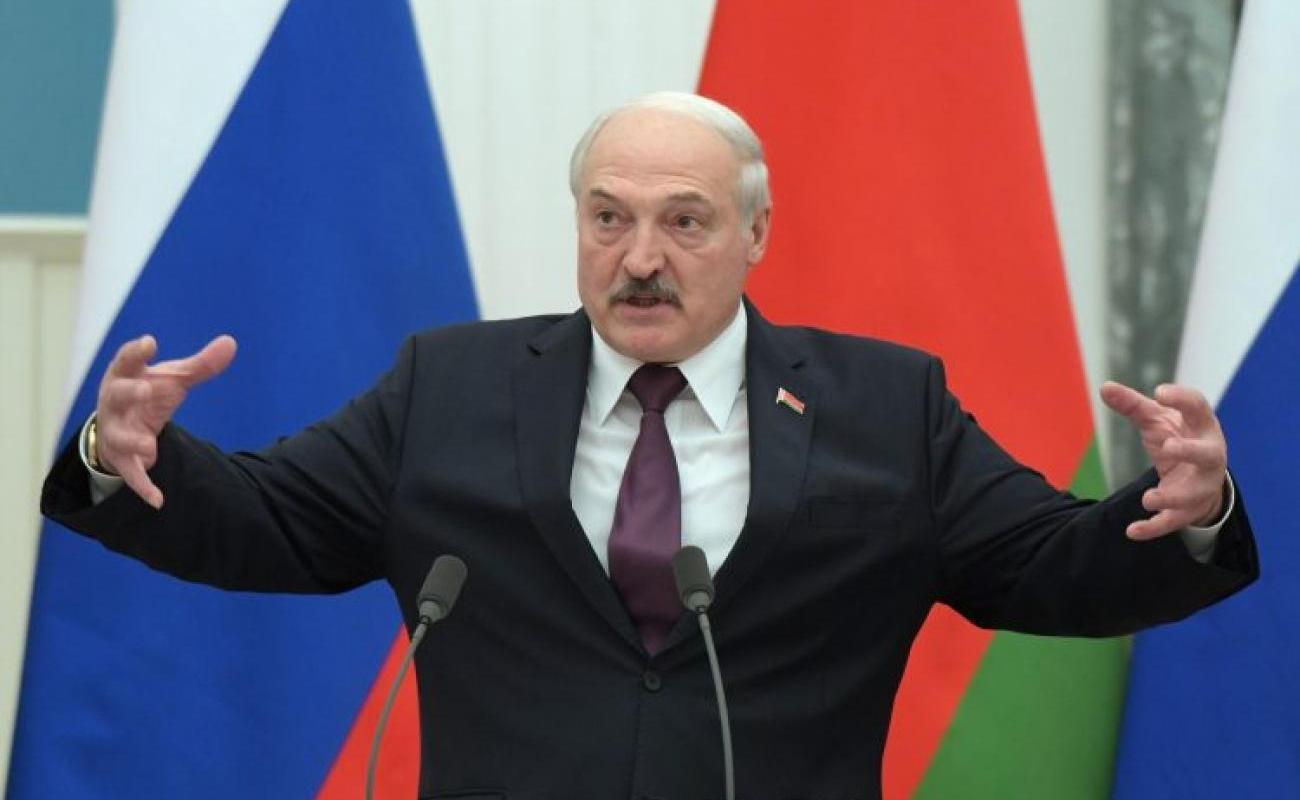Lukashenka orders covert mobilization and “counterterrorist measures” in Belarus

Recently, it became known that Belarus was sending its military equipment and ammunition to Russia. While Russia tries to drag Belarus into the war, this step was incompatible with the notion of the looming Belarus invasion of Ukraine from the north expected by some military experts.
In Russia’s all-out war against Ukraine, Belarus has been Russia’s closest ally and an accomplice to Russian aggression. Russia used the Belarusian territory as a staging ground for the ground offensive on Kyiv back in February 2022, and Russian missiles have been regularly targeting Ukraine from Belarus. Moreover, Russia hires Belarusian nationals to fight against Ukraine, although the Belarusian army didn’t enter the war yet.
Lately, Lukashenka and Russian President Putin agreed to deploy “a joint regional group of troops” in Belarus as the Belarusian military claims that the regional force grouping of the Union State of Belarus and Russia is a “purely defensive project.”
Now, further developments show that Belarus is sending signals of escalation to Kyiv and edging closer to open aggression against Ukraine.
Allegations that Ukraine wants to attack Belarus
On 8 October, the Belarusian Foreign Ministry handed a diplomatic note to the Ukrainian Ambassador in Belarus, in which the ministry claimed that Ukraine was allegedly planning an attack on the territory of Belarus.
“This information does not correspond to reality. We categorically reject yet another insinuation of the Belarusian regime. We do not rule out that the handing over of the diplomatic note may be part of the plan of the Russian Federation to carry out a provocation to further accuse Ukraine,” the Foreign Ministry of Ukraine replied to the Belarusian side in its statement.
Back in March, two weeks into Russia’s full-scale invasion of Ukraine, Belarus ruler Lukashenka tried to justify the Russian aggression by claiming that Ukraine was going to invade Belarus. Footage of him saying “And now I will show you, where they were preparing the attack on Belarus from” on 11 March even became an Internet meme. And this narrative didn’t disappear from the public discourse of official Belarus in the subsequent months. However, such propaganda tropes don’t often reach the highest diplomatic level.
Lukashenka orders “counterterrorism measures” in Belarus
On 14 October in Kazakhstan’s Astana, Aliaksandr Lukashenka confirmed that “counterterrorism measures” had been implemented in Belarus due to an alleged aggravation of the situation at the country’s borders, according to the Belarusian state-funded news agency Belta.
Earlier Belarusian Foreign Minister Vladimir Makei told the Russian newspaper Izvestia that Lukashenka “held a number of meetings with law enforcement agencies, and a counter-terrorist operation regime was introduced.”
“There was information that some neighbouring states were planning provocations related to nearly the seizure of certain sections of the territory of Belarus,” Makei claimed in his comment to Izvestia once again hinting on an allegedly planned Ukrainian invasion.
Initially, Lukashenka announced his “counter-terrorist” regime at a security meeting on 10 October saying that “a few days ago,” the Belarusian state security agency KGB had been instructed to carry out necessary counter-terrorist measures.
Covert mobilization
The opposition Belarusian newspaper Nasha Niva referring to several sources independent from each other reported that Belarus ruler Aliaksandr Lukashenka has made a decision to carry out a covert mobilization in order to augment the personnel of military units under the guise of combat capability checks.
According to Nasha Niva, the first stage of mobilization won’t affect Belarusian large cities as the rural population would be mobilized at the first stage. It is not reported if Belarus is going to man its military units to their wartime strength.
“The roundout of military units makes the escalation scenario on the Belarusian border with Ukraine probable,” Nasha Niva suggests.
Meanwhile, Aliaksandr Volfovich, the Belarusian “State Secretary of the Security Council,” claimed that the ongoing military recruiting campaign in Belarus is “absolutely routine” in nature:
“All the military recruiting activities are absolutely routine. Now we are launching a routine autumn conscription campaign. Therefore, there is no need to panic. Send your children there so that they develop a strong spirit and mature, gain experience, become more independent. [The Belarusian army is compact and] designed to localize those military threats, risks, challenges coming from our neighbors, unfortunately,” he told Belta.
Also, Nasha Niva’s sources in the Belarusian armed forces said that this week the Belarusian military was informed that they aren’t allowed to leave Belarus except for Russia, while the reserve officers are urged to return to active-duty service.
“If Lukashenka accepts Russia’s new escalation, it will almost certainly bring direct fighting to Belarus. If he abruptly withdraws his support for the conflict, he may in turn lose the support of Russia – which he needs to stay in power,” Belarusian journalist Igor Ilyash believes.
